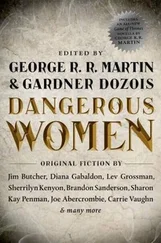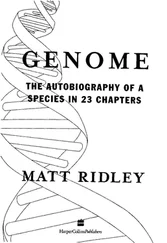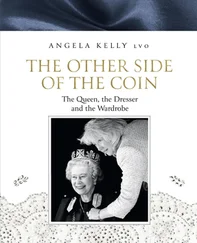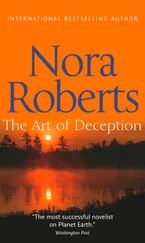The Queen - Matt Ridley
Здесь есть возможность читать онлайн «The Queen - Matt Ridley» весь текст электронной книги совершенно бесплатно (целиком полную версию без сокращений). В некоторых случаях можно слушать аудио, скачать через торрент в формате fb2 и присутствует краткое содержание. Жанр: Старинная литература, на английском языке. Описание произведения, (предисловие) а так же отзывы посетителей доступны на портале библиотеки ЛибКат.
- Название:Matt Ridley
- Автор:
- Жанр:
- Год:неизвестен
- ISBN:нет данных
- Рейтинг книги:4 / 5. Голосов: 1
-
Избранное:Добавить в избранное
- Отзывы:
-
Ваша оценка:
- 80
- 1
- 2
- 3
- 4
- 5
Matt Ridley: краткое содержание, описание и аннотация
Предлагаем к чтению аннотацию, описание, краткое содержание или предисловие (зависит от того, что написал сам автор книги «Matt Ridley»). Если вы не нашли необходимую информацию о книге — напишите в комментариях, мы постараемся отыскать её.
Matt Ridley — читать онлайн бесплатно полную книгу (весь текст) целиком
Ниже представлен текст книги, разбитый по страницам. Система сохранения места последней прочитанной страницы, позволяет с удобством читать онлайн бесплатно книгу «Matt Ridley», без необходимости каждый раз заново искать на чём Вы остановились. Поставьте закладку, и сможете в любой момент перейти на страницу, на которой закончили чтение.
Интервал:
Закладка:
They have. It is called "conjugation, " and it is widely agreed to be a form of sex itself. Two bacteria simply connect to each other by a narrow pipe and shunt some copies of genes across. Unlike sex, it has nothing to do with reproduction, and it is a relatively rare event. But in every other respect it is sex. It is genetic trade.
Donal Hickey of the University of Ottawa and Michael Rose of the University of California at Irvine were the first to suggest in the early 1980s that bacterial "sex" was invented not for the bacteria but for the genes—not for the team but for the players.' It was a case of a gene achieving its selfish end at the expense of its teammates, abandoning them for a better team: Their theory is not a full explanation of why sex is so common throughout the animal and plant kingdoms; it is not a rival to the theories discussed heretofore. But it does suggest how the whole process got itself started. It suggests an origin for sex:
From the point of view of an individual gene, then, sex is a way to spread laterally as well as vertically: If a gene were able to make its owner-vehicle have sex, therefore, it would have done something to its own advantage (more properly, it would be more likely to leave descendants if it could), even if it were to the disadvantage of the individual: Just as the rabies virus makes the dog want to bite anything, thus subverting the dog to its own purpose of spreading to another dog, so a gene might make its owner have sex just to get into another lineage.
::: 96:::
The Red Queen
Hickey and Rose are especially intrigued by genes called transposons, or jumping genes, that seem to be able to cut themselves our of chromosomes and stitch themselves back into other chromosomes. In 1980 two teams of scientists simultaneously came to the conclusion that the transposons seemed to be examples of "selfish " or parasitic DNA, which spreads copies of itself at the expense of other genes: Instead of looking for some reason that transposons exist for the benefit of the individual, as scientists had done before, they simply saw it as bad for the individual and good for the transposons.' Muggers and outlaws do not exist for the benefit of society but to its detriment and for the benefit of themselves. Perhaps transposons were, in Richard Dawkins 's words,
" outlaw genes. "8Hickey then noticed that transposons were much more common among outbreeding sexual creatures than among inbreeding or asexual ones. He ran some mathematical models which showed that parasitic genes would do well even if they had a bad effect on the individual they inhabited. He even found some cases of parasitic genes of yeast that spread quickly in sexual species and slowly in asexual ones. Such genes were on "plasmids,"
or separate little loops of DNA, and it turns out that in bacteria such plasmids actually provoke the very act of conjugation by which they spread: They are like rabies viruses making dogs bite one another: The line between a rogue gene and an infectious virus is a blurred one.'
NOBODY IS DESCENDED FROM ABEL
Despite this little rebellion, life is fairly harmonious in the bacterial team. Even in a more complicated organism such as an amoeba, formed by an agglomeration of ancestral bacteria sometime in the distant past,'° there is little difference between the interests of the team and the individual members. But in more complicated creatures the opportunities for genes to thrive at the expense of their fellows are greater.
The genes of animals and plants turn out to be full of half-GENETIC MUTINY AND GENDER
::: 97 :::
suppressed mutinies against the social harmony: In some female flour beetles there exists a gene called Medea that kills those off-•
spring that do not inherit it:" It is as if the gene booby-traps all the female 's young and defuses only those that it itself inhabits. Whole selfish chromosomes called B chromosomes exist that do nothing but ensure their transmission to the next generation by invading every egg the insect makes.' Another insect, a scale insect, has an even more bizarre genetic parasite: When its eggs are fertilized, sometimes more than one sperm penetrates the egg. If this happens, one of the sperm fuses with the egg's nucleus in the normal way; the spare sperm hang around and begin dividing as the egg divides: When the creature matures, the parasitic sperm cells eat out its gonads and replace them with themselves. So the insect produces sperm or eggs that are barely related to itself, an astonishing piece of genetic cuckoldry:"
The greatest opportunity for selfish genes comes during sex: Most animals and plants are diploid: Their genes come in pairs: But diploidy is an uneasy partnership between two sets of genes, and when partnerships end, things often get acrimonious.
The partnerships end with sex: During meiosis, the central genetic procedure of sex, the paired genes are separated to make haploid sperm and eggs: Suddenly each gene has an opportunity to be selfish at its partner 's expense: If it can monopolize the eggs or sperm, it thrives and its partner does not.'
This opportunity has been explored in recent years by a group of young biologists, prominent among them Steve Frank of the University of California at Irvine, and Laurence Hurst, Andrew Pomiankowski, David Haig, and Alan Grafen at Oxford University.
Their logic goes like this: When a woman conceives, her embryo gets only half of her genes: They are the lucky ones; the unlucky other half languish in obscurity in the hope of another toss of the coin when she next breeds. For, to recapitulate, you have twenty-three pairs of chromosomes, twenty-three from your father and twenty-three from your mother. When you make an egg or a sperm, you pick one from each pair to give a total of twenty-three chromosomes: You could give all the ones you inherited from your mother
::: 98 :::
The Red Queen
or all the ones from your father, or more likely a mixture of the two. Now a selfish gene that loaded the dice so that it stood a better than fifty-fifty chance of getting into the embryo might do rather well. Suppose it simply killed off its opposite number, the one that came from the other grandparent of the embryo.
Such a gene exists. On chromosome two of acertain kind of fruit fly there is a gene called "segregation distorter, " which simply kills all sperm containing the other copy of chromosome two.
The fly therefore produces half as much sperm as normal. But all of the sperm contains the segregation distorter gene, which has thereby ensured a monopoly of the fly 's offspring."
Call such a gene Cain: Now it so happens that Cain is Abel's virtually identical twin, so he cannot kill his brother without killing himself. This is because the weapon he uses against Abel is merely a destructive enzyme released into the cell—a chemical weapon, as it were. His only hope is to attach to himself a device that protects him—a gas mask (though it in fact consists of a gene that repels the destructive enzyme). The "mask of Cain " protects him from the gas he uses against Abel. Cain becomes an ancestor, and Abel does not. Thus a gene for chromosomal fratricide will spread as surely as a murderer will inherit the Earth. Segregation distorters and other fratricidal genes go under the general name of
" meiotic drive " because they drive the process of meiosis, the division of the partnerships, into a biased outcome."
Meiotic-drive genes are known in flies and mice and a few other creatures, but they are rare. Why? For the same reason that murder is rare. The interest of the other genes has been reasserted through laws. Genes, like people, have other things to do than kill each other. Those genes that shared Abel 's chromosome and died with him would have survived had they invented some technique to foil Cain. Or, to put it another way, genes that foil meiotic drivers will spread as surely as meiotic drivers will spread. A Red Queen race is the result:
Читать дальшеИнтервал:
Закладка:
Похожие книги на «Matt Ridley»
Представляем Вашему вниманию похожие книги на «Matt Ridley» списком для выбора. Мы отобрали схожую по названию и смыслу литературу в надежде предоставить читателям больше вариантов отыскать новые, интересные, ещё непрочитанные произведения.
Обсуждение, отзывы о книге «Matt Ridley» и просто собственные мнения читателей. Оставьте ваши комментарии, напишите, что Вы думаете о произведении, его смысле или главных героях. Укажите что конкретно понравилось, а что нет, и почему Вы так считаете.












